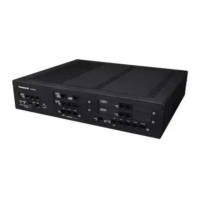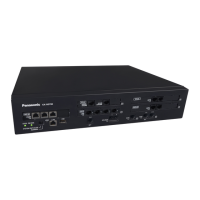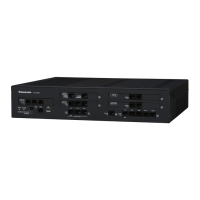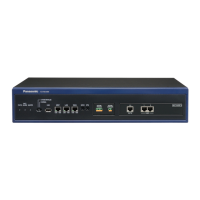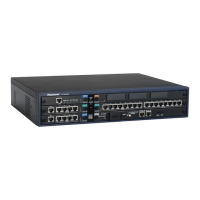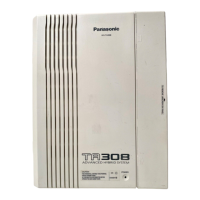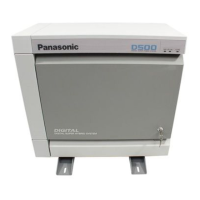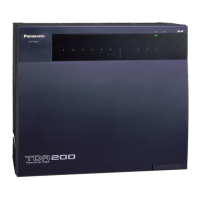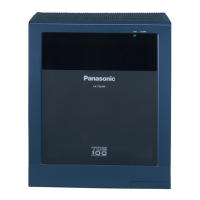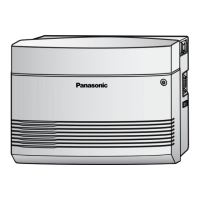4.3.1.4 Common Extension Numbering for 2 PBXs
Description
Two PBXs can have extensions with the same leading number. TIE Line calling is available using extension
numbering.
PBX-1
TIE Line
PBX-2
InterfaceInterface
Extn.1013
Extn.1011 Extn.1012
Dials "1013".
Explanation:
If a dialled number is not found at the local PBX, the call can be sent to the remote PBX.
When
an extension number is dialled, the PBX first searches local extensions for a matching number. If there
is no match, the PBX then checks the TIE Line Routing Table for a corresponding entry. If an entry is found,
the call is sent to the connected PBX.
Case 1:
Extension 1012 of PBX-1 dials extension number "1011".
® The dialled number is found at the local PBX, so extension 1012 of PBX-1 is connected to extension 1011
of PBX-1.
Case 2:
Extension 1012 of PBX-1 dials extension number "1013".
® The dialled number is not found at the local PBX, so the call is redirected to the specified TIE Line, and
extension 1012 of PBX-1 is connected to extension 1013 of PBX-2.
Conditions
• KX-NSN002 (Activation Key for QSIG Network) is required to use this feature.
• System programming is required to enable this feature.
Feature Guide 427
4.3.1 TIE Line Service
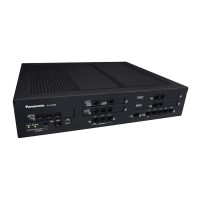
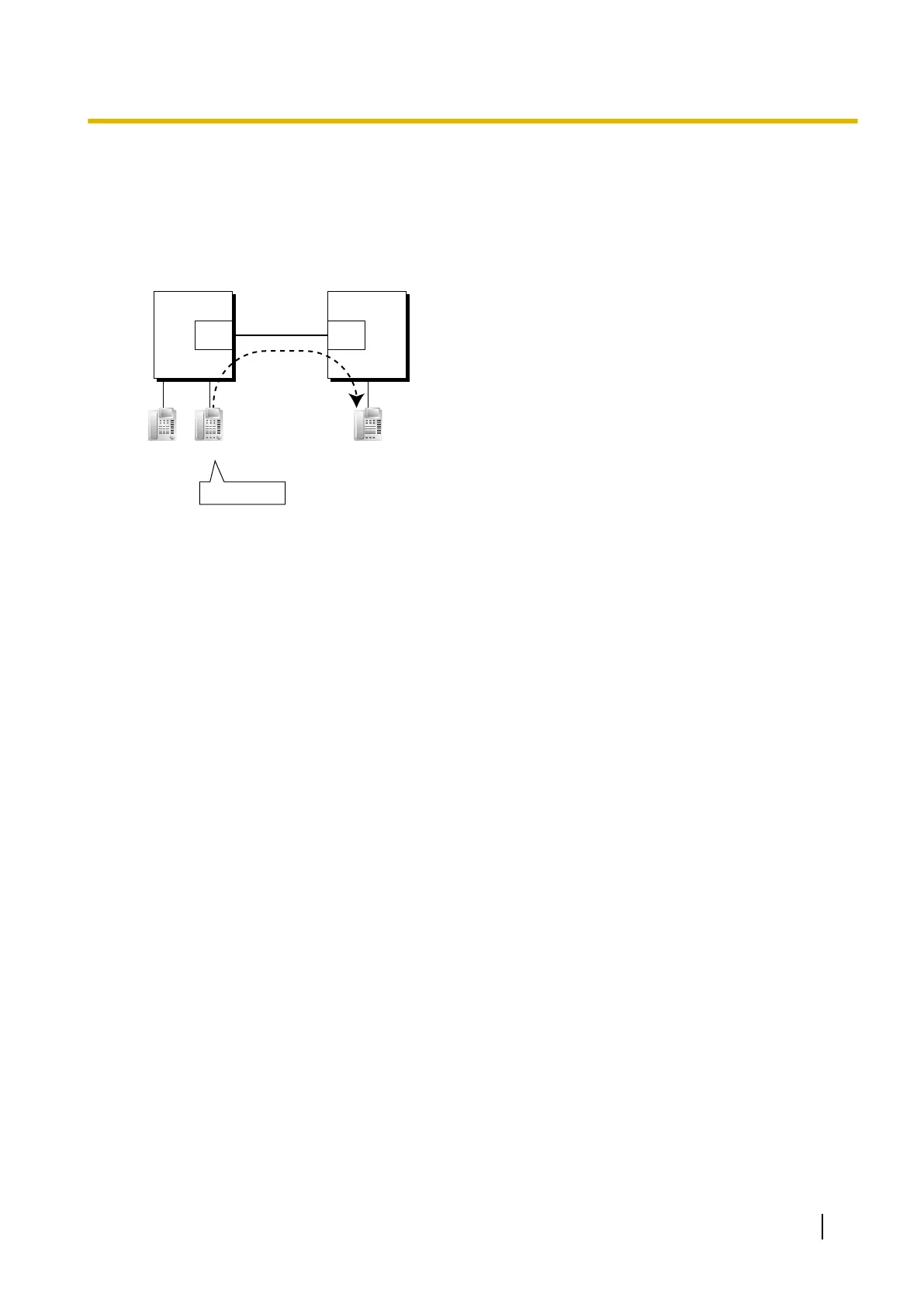